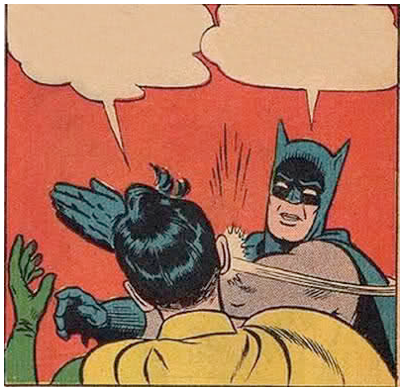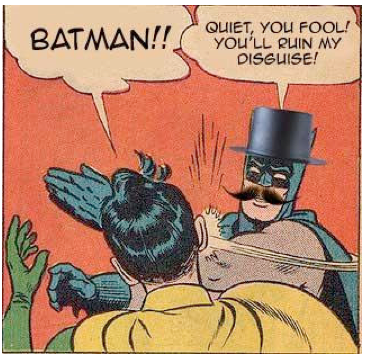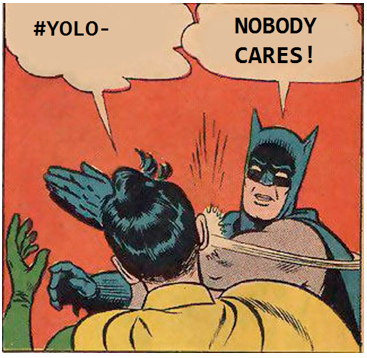Making Sense of Memes: Where They Came From and Why We Keep Clicking Them
By
2014, Vol. 6 No. 03 | pg. 1/2 | »
IN THIS ARTICLE
KEYWORDS
Are memes mere distractions from our normal office boredom? Funny, stupid, or poignant, this most simple digital medium captures our attention in particularly unique ways. But how and why did this form of cultural transmission become so popular, and potentially, so powerful? Richard Dawkins was the first person to use the term, referring at the time to a cultural unit that is reproduced and transmitted over time through imitation and self-replication. Dawkins (1976) wrote in The Selfish Gene: “We need a name for the new replicator, a noun that conveys the idea of a unit of cultural transmission, or a unit of imitation. ‘Mimeme’ comes from a suitable Greek root, but I want a monosyllable that sounds a bit like ‘gene’.” (p. 192). In his book, Dawkins (1976) provided as examples of meme melodies and tunes, items in fashion, architectural features and other cultural units that have been spread or replicated over a certain period of time.There is much irony in seeing a Batman Slapping Robin meme that addresses greater debates like "nature versus nurture" or the previous Presidential elections. The word meme has changed since its creation by Dawkins. It now refers, in Internet language, to pictures, sounds, videos or websites that are shared or reproduced from person to person through social media and user-generated content websites like Facebook, Twitter, Youtube, Tumblr, Reddit, etc. This examination considers Internet memes that are composed of an image, either an illustration or a photograph, accompanied by text. Under this form only what is written changes. This way, a new story or a new joke is created, however with the restriction of having to use the same image and the same framework of image each time. Fig 1. The Batman Slapping Robin template. How Did Memes Come to Be?Memes are the result of our capacity for digital reproduction. Walter Benjamin (1998) argued in 1936 that mechanical reproduction of a work of art had, technically, always been possible, but that with the growing mechanical and technological advances of the 20th century, the capacity to reproduce certain works to perfection is growing at an unprecedented pace. In The Work of Art in the Age of Digital Reproduction, David Douglas (1995) updated Benjamin’s argument to our reality: we live in a digital era where we have, virtually, the capacity to reproduce images flawlessly, and endlessly (p.382). Given our technology, and given our opportunity for digital reproduction, we now have ways of engaging with images that did not exist in the past. For Douglas (1995), the difference between our relationship to images on the Internet and the one with printed images lies, as previously mentioned, in the capacity of endless and flawless reproduction, but also in the capacity of endless variation, and our further ability to share those variations (pp.282-283). Software exists to give individual users the opportunity to manipulate and change images, turn them upside down, change the colors, the background, superpose other images, alter the size of what is being portrayed, etc. In Douglas’ words (1995), “Each of these programs in one way or another unlocks for the individual user a pluralist world of visual imagery, transmitted on demand and by personal choice” (p.382). The only requirements for participating in that reproduction, sharing and variation of images are access to the Internet and basic computer skills. Who Creates Memes?Accordingly, memes are user-generated. Memes are an active form of engagement with images. Each meme is the product of an individual who changed and altered the image and the text to give it a specific meaning (see Figure 2). Douglas (1995) wrote, in The Work of Art in the Age of Digital Reproduction that faced with the capacity to alter images, people are empowered as individuals, and that each image copied is an individuated copy (pp. 382-385). In the case of memes, they are created to be shared with other people; they are aimed at a large audience. We have to consider that, thanks to the Internet, a group of delocalized, decentralized people can have a shared, collective experience of images when 100 years ago the same phenomenon would have been limited. In order to be able to participate in that collectivity, and be able to communication ideas and jokes to each other, the “delocalized” members of that collectivity need to have a common lexicon of the image, a set of shared rules on how memes work. Memes are thus a shared collective language, yet each single meme is the product of a single individual. Cavarero (2005), in her discussion of A King Listens, wrote there are ways to witness, other than with sight, other people’s individuality. We can certainly state that in the case of the Internet, “no face is visible” (Cavarero, 2005, pp.3-4). However, each being creating memes is an individual, irreproducible, being, that shares his or her ideas, personal experiences, jokes, and (even if only in restricted forms) vision of the world. Fig 2. An example of variation by an individual who used software to change the image in order to make it more ironic.
What makes the “who” difficult to define here, in the context of who generates memes, is the blurry line that exists between the individual and the collective. An individual can produce a meme, which will be shared, re-appropriated, re-created in other forms, shared again, and the initial individuated copy of the image will be, after a while, an image possessed by a collectivity. What makes the separation between the individual and the collective even less easy to address is the use of usernames, which protect the anonymity of the person creating the meme. Moreover, the content of memes tends to address general topics of shared conditions of being alive in a specific society, thus erasing the individual creator of memes to the profit of collective experience, and collective opinion (see Figure 3). In short, memes are targeted to a large audience, yet they stay a very active and personal form of interaction with images, probably one of the most interactive that exists on the Internet. Fig 3. The expression of a general opinion.
Why Create Memes?What can memes tell us about the way people engage with images today? The framework of a meme, the assemblage of a text and an image, require from the creators and viewers alike that their environments be summarized in very limited ways. In the chapter “Conscious” Ain’t Consciousness in Sensuous Ethnography, Stroller (1997) shortly discussed how cinema screens have come to be, since the inception of cinema, a way to understand and perceive the world. Stroller (1977) argued that images, sensuous ways of knowing and living in the world, as well as the relation between body and memory, play a role in the way we think of ourselves as individual and collective bodies. In making his way through his argument, he introduced a concept that can be borrowed and applied to Internet memes. He explained how at first it was difficult for audiences to comprehend that the moving images of films were being played on a screen. But soon enough, audiences came to make the “phenomenological reductions necessary to apprehend cinematic image” (Stroller, 1997, p.77). Similar phenomenological reductions are necessary to understand and articulate Internet memes. Cinema forced a transformation of the sense to make cinematic image possible for audiences. The same way, by requiring that events and stories be summarized by an image and a couple of words, similar “phenomenological reductions” are necessary to apprehend images used to generate memes. Those reductions can be observed as it has led to people having conversations in memes, meme-themed marriage proposals, meme t-shirts, etc.Continued on Next Page » Suggested Reading from Inquiries Journal
Inquiries Journal provides undergraduate and graduate students around the world a platform for the wide dissemination of academic work over a range of core disciplines. Representing the work of students from hundreds of institutions around the globe, Inquiries Journal's large database of academic articles is completely free. Learn more | Blog | Submit Latest in Sociology |



















